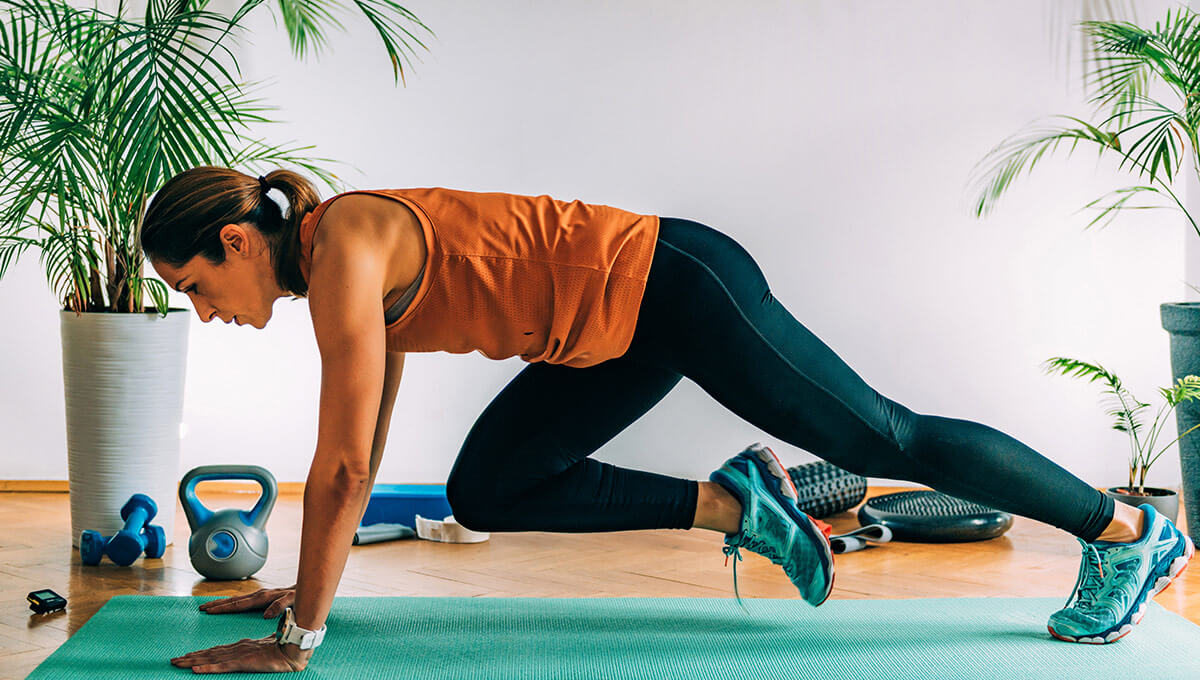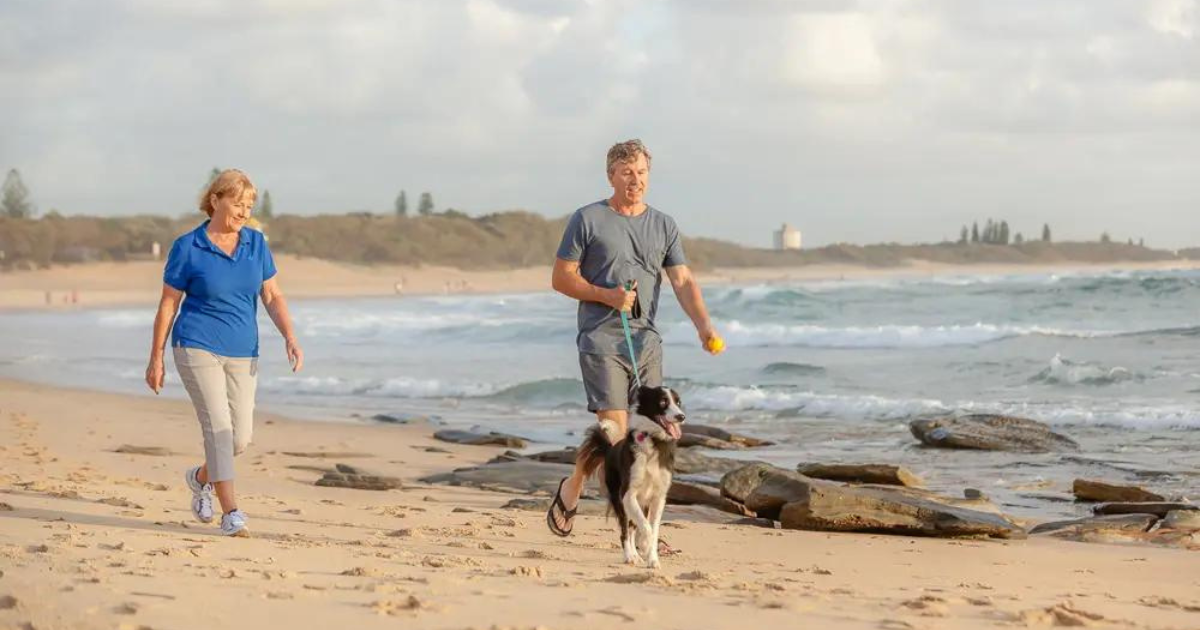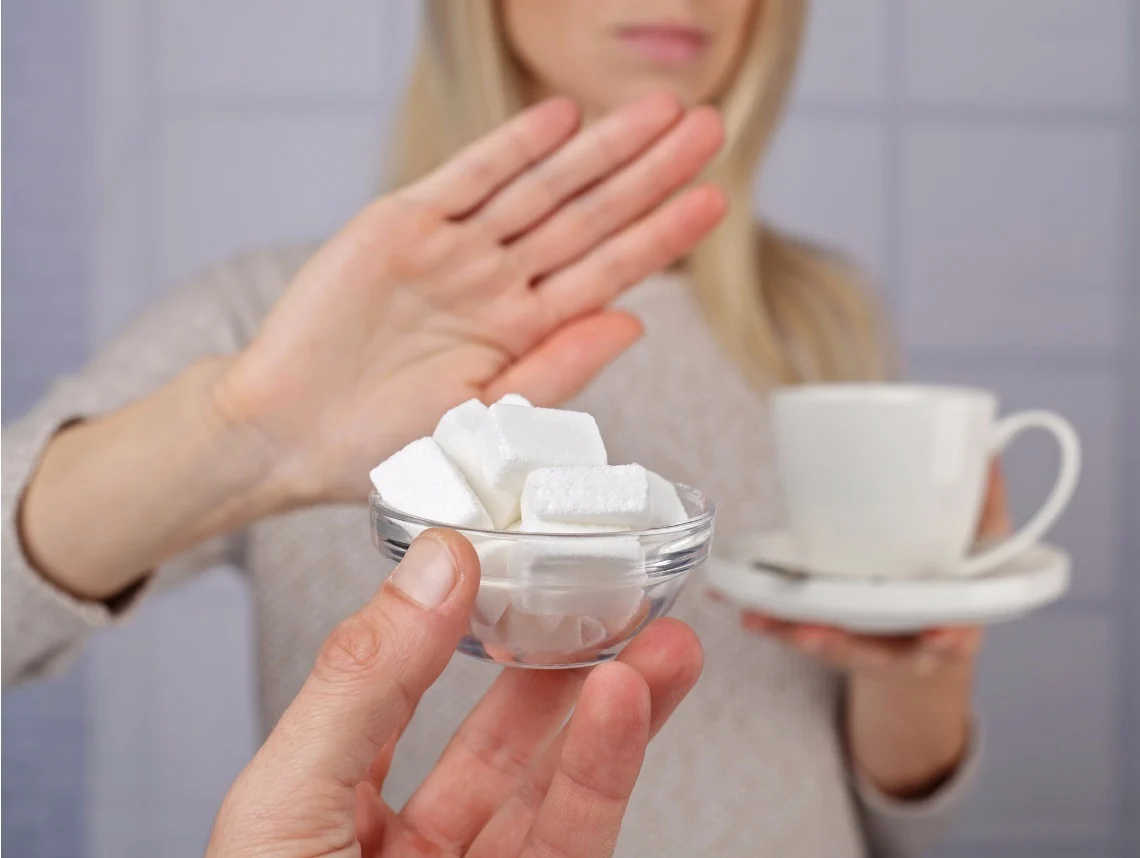The word “become fit” is frequently used to refer to slimming down or toning up, but this challenge is about much more than just looking great in your gym gear. Consider it a month-long effort to improve the quality of your life: the steps ahead are intended to assist you in prioritizing your own self-care, one day at a time.
30 strategies for getting fitter in 30 days
Day 1: Set a goal
Lay the groundwork for what you want to accomplish over the following month on day one. Create a list of reasons why you want to improve your health that have nothing to do with looks. Do you want greater energy, better sleep, better digestion, higher immunity, or stronger muscles? Choose at least three goals that you can track. This will assist you in maintaining your motivation.
Day 2: Renovate your pantry
Examine the foods you have on hand. Discard any that are too processed, have artificial additives, or include substances you don’t recognize. Additionally, get rid of any things you actually despise that you purchased just because you believe you “should” be eating them. Good eating is about pleasure and nutrition, not deprivation and willpower.
Day 3: Examine the scale
Check in with your emotions before weighing yourself. Some individuals consider weight to be a data point. Weighing in once a week may help these people achieve healthy, long-term weight loss or maintenance. If the thought of stepping on the scale makes you anxious, skip it and instead focus on how you feel. If you’re trying to lose weight, focus on how your clothing fit rather than a number.
Day 4: Be pumped up about going active
Select a physical activity that you like and commit to it for 30 minutes. Walking, hiking, swimming, dancing, riding, roller skating—whatever it is that you enjoy doing. Instead of considering it workout, consider it much-needed “you time.”
Day 5: Strike a balance in the kitchen
If your eating habits have been inconsistent, try organically changing your portion sizes: According to research, eating from smaller plates (try 9-inch plates) with smaller cutlery helps your brain perceive meals differently, allowing you to feel content without overeating.
Day 6: Spend some time on your core
Core strength may help you improve your posture, reduce back discomfort, promote correct breathing, and even enhance your digestion. Today, try a bird-dog plank variant. Begin in a plank posture, then extend one arm and the opposing leg without breaking form; swap sides. Do 10 repetitions on each side.
Day 7: Replace butter with avocado
Avocado has healthy lipids that help reduce inflammation, enhance circulation, and protect your heart. Avocado is also quite tasty and filling! On toast, replace butter with ripe avocado. You may also use it as a healthy substitute in dishes such as baked goods to increase your nutritional and fiber consumption. Each tablespoon of butter should be replaced with 1/2 tablespoon of avocado.
Day 8: Name your favorite snacks
It’s impossible to go through life never eating your favorite foods. It’s also not required if you’re attempting to reduce or maintain your weight. Create a list of your favorite goodies and prepare healthy methods to enjoy them. Instead of purchasing a pint of ice cream to store in the freezer, go out for a scoop with a buddy. The idea is to achieve a good balance rather than to restrict oneself.
Day 9: Get up and get moving!
Every hour on the hour, take a walk, stretch, or even squat. Even if you exercise, sitting for lengthy periods of time increases your risk of developing a chronic condition, according to research. These are six simple methods to sit less each day.
Day 10: Improve your vegetable game
One of the most beneficial habits for general health is aiming for five cups (or around five tennis ball-sized servings) of vegetables every day. Veggies help reduce inflammation, lessen the risk of almost every chronic illness, and even support greater mental health, in addition to promoting immune and digestive health. Including one more serving today. Choose raw vegetables with hummus or guacamole, oven-roasted vegetables, vegetables sautéed in EVOO, or salad with extra virgin olive oil vinaigrette. When preparing meals, prioritize vegetables and build around them.
Day 11: Make a “play date”
Ask a friend to join you in a fun activity. Consider taking a new exercise class, indoor rock climbing, or a dancing class. Instead, organize a game of volleyball, dodge ball, softball, or basketball. Combining exercise and social time has been found to increase motivation and produce even greater fitness benefits.
Day 12: Change your lunch
Rather than eliminating carbohydrates entirely, consider an open-faced sandwich with a side of vegetables, slaw, or salad. Instead, choose a lettuce wrap with a carb-rich side dish, such as baked sweet potatoes or fresh fruit.
Day 13: Include a spicy element in your meal
Chili peppers and spicy sauce have a thermogenic impact, which means they physically burn additional calories while you chew. Add a diced hot pepper to a salad or stir-fry. Hot peppers have been linked to improved heart health due to their propensity to lower “bad” LDL cholesterol and increase “good” HDL cholesterol, according to research.
Day 14: Check in with your goals
You’re about halfway through. Consider revisiting the three outcomes you identified on Day 1. Consider how your everyday behaviors relate to your goals. For example, if stress reduction is on your list, prioritize those things that will help you feel better. Getting an extra hour of sleep or practicing a five-minute guided meditation in the morning are two examples. Maintaining awareness of your results can assist you in making decisions that better support your aims.
Day 15: Have an egg for breakfast
Beginning your day with a protein-rich lunch keeps you full and content for longer. Eggs are one of the simplest (and most delicious) ways to increase the protein in your morning meal, whether scrambled, over-easy, or in a sandwich. If you can’t or don’t want to consume eggs, make a vegetarian scramble with mashed chickpeas instead.
Day 16: Remember to stretch!
Stretching is equally as vital for general health as cardio and weight training. It promotes posture, balance, and coordination by reducing stiffness, increasing range of motion, increasing circulation, relieving stress and tension, and improving posture, balance, and coordination. Also, you may gently stretch at any time—no special equipment is required.
Day 17: Workout at the appropriate time for you
A morning sweat activity keeps your metabolism going all day. Nevertheless, if you simply aren’t a morning exerciser, listen to your body and pick the time of day that feels best for you—that way, you’ll be more likely to stay with the practice.
Day 18: Attempt a bodyweight workout
Strength training is an essential component of fitness. This type of exercise benefits a healthy metabolism, muscular maintenance, injury prevention, and bone density, among other things. But, weights are not required to increase your strength. You may use your own body weight to do exercises such as push-ups, dips, planks, and squats. Check out these 10-minute internet workouts that you can do anywhere.
Day 19: Include more vegetarian meals in your diet
Exchange meat, fish, or poultry for pulses, which include beans, lentils, peas, and chickpeas. Pulses include the greatest plant protein of any complete food group, as well as fiber, antioxidants, vitamins, and minerals. They’re also naturally gluten-free, widely available, inexpensive, adaptable, environmentally friendly, and linked to a variety of health advantages, including weight loss and a lower risk of type 2 diabetes.
Day 20: Go for Water
Make water your primary beverage, and drink 16 ounces of it four times each day. If you don’t like your water simple, try some all-natural infusions. It’s fine to have a glass of wine now and again. Your morning coffee is also fine.
Day 21: Go outside!
Time spent in nature is a vital approach to promote health and fitness. Exposure to green space has been shown in studies to reduce the risk of heart disease, type 2 diabetes, high blood pressure, and early mortality. It also provides possibilities for physical exercise and socialising while extending sleep length. Toda, go to a park, go for a hike, visit a community garden, or simply go for a stroll outside and breathe in some fresh air.
Day 22: Do a loop around the lunch table
Instead of spending your whole lunch break in the kitchenette (or worse, at your desk), grab a coworker and go for a quick stroll for portion of the hour. According to research, taking 15-minute walks after meals can help stabilize blood sugar levels for up to three hours and lower the chance of developing type 2 diabetes.
Day 23: Eat something fresh and fruity
If you’re feeling tired in the afternoon, try one cup or one piece of fresh fruit (about the size of a tennis ball) and one quarter cup (about the size of a golf ball) of whole almonds. This pair contains nutrient-dense carbohydrates as well as plant-based protein, fat, and fiber. The combination produces constant, continuous energy to get you through the rest of the day.
Day 24: Have some dark chocolate
Get 70% dark chocolate. This delightful treat has been found to lower stress hormone levels, lower blood pressure, increase circulation, boost brain activity, and induce pleasure equivalent to falling in love! Take a moment and savor a square or two carefully. Let it to melt in your tongue and relish every bite.
Day 25: Express thankfulness
According to studies, spending 15 minutes before bed jotting down appreciative thoughts enhances sleep length and quality. Additional studies link thankfulness to enhanced happiness, a lower risk of depression, fewer aches and pains, more empathy for others, higher self-esteem, and a greater capacity to endure adversity. That’s a great wellness return for a relatively small time commitment.
Too much time spent on social media has been found to raise the risk of depression while decreasing happiness and life satisfaction. Use those minutes to accomplish something that makes you happy, both physically and emotionally. Skype a loved one, snuggle with a pet, go outside, meditate, stretch, or nap. The possibilities are limitless.
Day 27: Laugh it up!
Make an effort to laugh out loud today. Take a break by watching beautiful kitten videos on YouTube or calling your most amusing buddy. Laughing increases hormones that improve mood and immunity. It has also been demonstrated to cut “bad” LDL cholesterol, boost “good” HDL cholesterol, and lower blood pressure.
Day 28: Evaluate your strength
Once the month draws to an end, choose a few strength movements and assess your improvement. Can you maintain a plank for a longer period of time, or perform more push-ups or burpees with proper form than you could at the outset of this challenge? Consider how your body has reacted to the change in your routine. And keep setting reasonable objectives that feel good for you, even if that means maintaining your strength rather than improving it.
Day 29: Broaden your horizons in terms of whole grains
Whole grains are extremely health protective in addition to delivering fiber and nutrient-rich slow-burning carbohydrates for prolonged energy. Its intake has been linked to a decreased risk of cardiovascular disease, stroke, cancer, type 2 diabetes, and obesity. Increase the amount of whole grains in your regular meals and snacks. Oats, brown or wild rice, quinoa, millet, and sorghum are all naturally gluten-free alternatives.
Congrats on Day 30!
You’ve dedicated 30 days to making modest improvements that can add up to big benefits for your health. Spend a few time going through the goals you set on Day 1. Consider how far you’ve come. What worked well? What, if any, obstacles did you face? Going forward, how can you position yourself to sustain your development and emphasize your own wellness? The road to a fitter you is a multi-layered one. It includes not only how you exercise your body, but also how you eat, drink, sleep, and prioritize your mental health. It’s a way of life—and you’re living it!
Conclusion:
Thirty days will pass by, but if you remain focused, you can accomplish a lot. “Although it’s physically impossible to go from being overweight and out of shape to looking like a Men’s Health cover model by Memorial Day,” said Fauci, “one month is absolutely a fair length of time to show clear fitness gains.”







